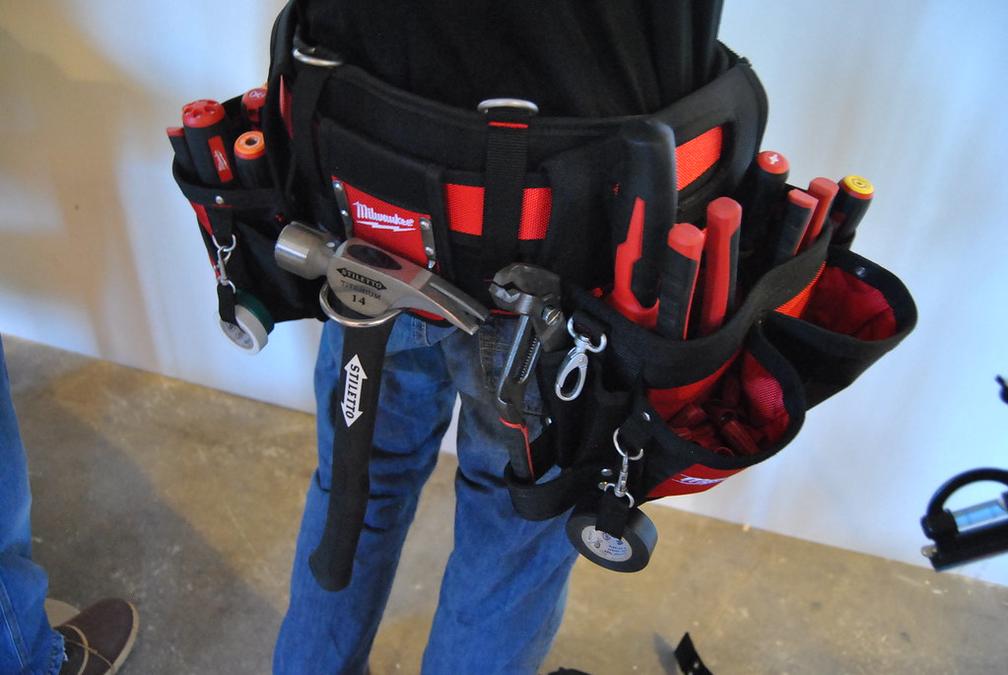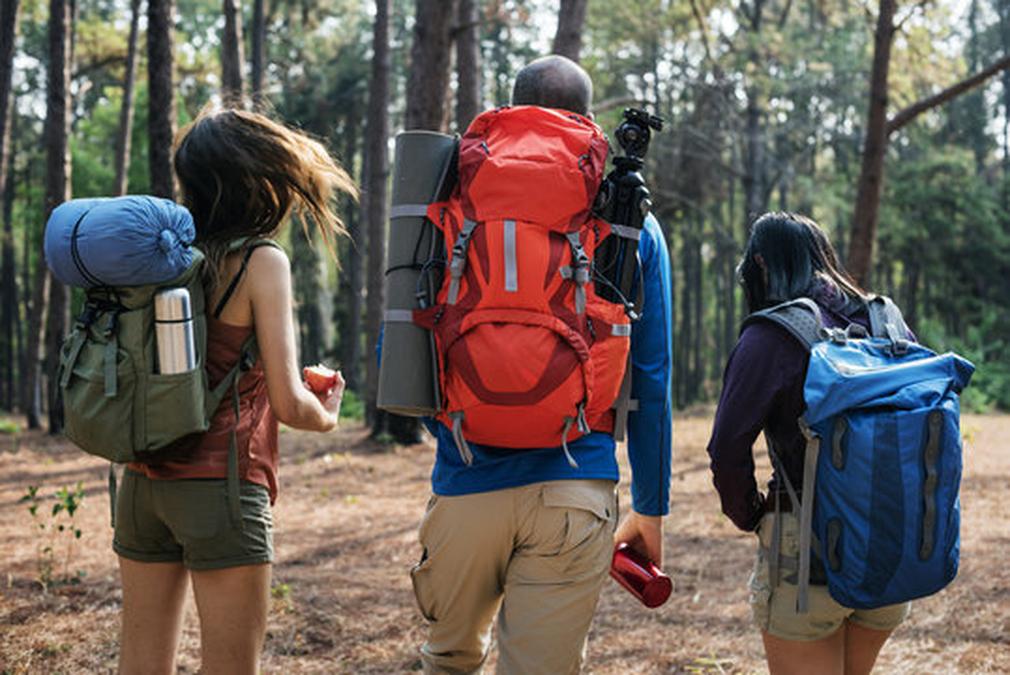How to Choose the Right Backpack for Camping
When planning for a camping trip, selecting the right backpack is essential to make your trip comfortable and enjoyable. The backpack you choose should be able to carry everything you need while also fitting comfortably on your body. Here are some tips to help you choose the right backpack for camping.
Determine the Length of Your Trip
The length of your camping trip is a major factor in choosing the right backpack. The longer the trip, the more items you will need to carry with you. Consider the following backpack sizes based on the length of your trip:
- Day hikes: For day hikes, a backpack with a capacity of 10 to 25 liters should suffice. This size is perfect for carrying your essentials, such as snacks, water, and extra layers of clothing.
- Multi-day hikes: For multi-day hikes, a backpack with a capacity of 20 to 35 liters is recommended. This size is ideal for carrying a sleeping bag, a tent, and other camping gear.
- 3-day or longer hikes: If you plan to go on a 3-day or longer hike, it is best to choose a backpack with a minimum capacity of 35 liters. This size will allow you to carry everything you need, including food, water, and other essential items.
Consider the Weight and Bulk You Want to Carry
The weight and bulk of your camping gear will affect the size of backpack you need. Consider your gear and how much weight and bulk you want to carry. Remember, the heavier the gear, the larger the backpack you will need.
Look for Features
When selecting a backpack, you will want to look for features that will make your camping trip more comfortable. Here are some features to consider:
- External frames: Backpacks with external frames are great for carrying heavier loads and strapping more gear to the outside.
- Internal frames: Backpacks with internal frames are lighter, more compact, and better suited to tight quarters.
- Hip and shoulder belt padding: Look for backpacks with padded hip and shoulder belts for added comfort.
- Heat-moldable hip belts: Heat-moldable hip belts can provide a more custom fit for your hips.
- Pivoting hip belts: Backpacks with pivoting hip belts can help distribute the weight of your gear more evenly.
- Accessory pockets: Backpacks with accessory pockets can help you organize your gear and keep it easily accessible.
Proper Sizing and Fitting of a Pack
Choosing the right size backpack is important for ensuring comfort and proper weight distribution. Here are some factors to consider:
- Torso length: The length of your torso will determine the size of backpack you need. Measure your torso length to determine the appropriate size.
- Hip circumference: The circumference of your hips will also affect the size of backpack you need. Measure your hips to ensure a proper fit.
- Load-lifter straps and sternum straps: These straps can help adjust the fit of your backpack and distribute weight more evenly.
Shape and Fabrics of the Pack
The shape and fabrics of your backpack can also affect how comfortable it is to wear. Consider these factors:
- Women-specific packs: Women-specific packs are designed to fit a woman’s body shape and provide added comfort.
- External frame packs: External frame packs are great for carrying heavier loads and strapping more gear to the outside.
- Hydration compatibility: Look for backpacks that are compatible with hydration systems, so you can stay hydrated while on the trail.
- Compression straps: Compression straps can help keep your gear compact and secure.
- Ski/board compatibility: If you plan to ski or snowboard on your camping trip, look for backpacks that are compatible with these activities.
- Spindrift collars: Spindrift collars can help keep snow and debris out of your backpack.
- Attachment points: Look for backpacks with attachment points for carrying additional gear, such as trekking poles or ice axes.
Conclusion
Choosing the right backpack for camping is essential for a comfortable and enjoyable trip. Consider the length of your trip, the weight and bulk of your gear, and the features you need when selecting a backpack. Proper sizing and fitting of your backpack is also important for ensuring comfort and proper weight distribution.
Expert Tips for Finding the Right Backpack
Choosing the right backpack can be a daunting task, especially with the many options available in the market. Here are some expert tips to help you find the right backpack for your camping adventure.
Choosing the Right Volume
Choosing the right volume for your backpack is crucial for ensuring you have enough room to carry all your gear. However, you don’t want to carry a backpack that is too big or too small. Here are some tips for choosing the right volume:
- Make a list of all the gear you need: Start by making a list of all the gear you need to carry, including food, water, clothing, and camping gear. According to REI, knowing what gear you need is the first step in choosing the right backpack.
- Consider the weight of your gear: The weight of your gear will affect the size of the backpack you need. The heavier your gear, the larger the backpack you will need. As per Backcountry, the weight of your gear plays a crucial role in determining the size of your backpack.
- Choose a backpack with the appropriate volume: Once you have a list of all the gear you need to carry and know the weight of your gear, you can choose a backpack with the appropriate volume. Salomon recommends that for a day hike, a pack between 10 and 25 liters should suffice. For multi-day hikes, a pack between 20 and 35 liters is recommended, while a minimum of 35 liters is suggested for hikes lasting 3 days or more.
Fitting the Pack
Fitting your backpack properly is essential for ensuring comfort and proper weight distribution. Here are some tips for fitting your backpack:
- Torso length: Measure your torso length to ensure you choose a backpack that fits properly. According to REI, most backpacks come in different sizes that are based on torso length.
- Hip circumference: Measure your hip circumference to ensure the hip belt fits properly and can support the weight of your gear. As per EMS, the hip belt should be snug, but not tight, and should sit on top of your hip bones.
- Load-lifter straps and sternum straps: Adjust the load-lifter straps and sternum straps to ensure the weight of your gear is evenly distributed. REI recommends adjusting the load-lifter straps to a 45-degree angle to transfer weight to your hips.
Selecting the Right Suspension
The suspension system of your backpack is crucial for ensuring comfort and proper weight distribution. Here are some tips for selecting the right suspension:
- Padded shoulder straps and hip belts: Look for backpacks with padded shoulder straps and hip belts for added comfort. Backcountry recommends choosing a backpack with a hip belt that is heat-moldable to fit your body.
- Ventilation: Backpacks with ventilation can help keep you cool and dry while hiking. According to Outdoorgearlab, ventilation is particularly important for backpacks with heavier loads.
- Frame type: Choose a backpack with a frame type that suits your needs, such as an internal or external frame. Backcountry suggests that external frame packs offer the ability to carry heavier loads and strap more gear to the outside, while internal frame packs are lighter, more compact, and better suited to tight quarters.
Storage Compartments, Pockets, and Sleeves
Storage compartments, pockets, and sleeves can help you organize your gear and keep it easily accessible. Here are some tips for choosing the right storage options:
- Main compartment: The main compartment is the largest space in your backpack and should be used for larger items, such as your sleeping bag or tent. According to EMS, the main compartment should be easily accessible and have a top-loading design.
- Sleeping bag compartment: The sleeping bag compartment is usually at the bottom of the backpack and is designed to hold your sleeping bag. REI suggests that if your backpack doesn’t have a sleeping bag compartment, you can use a compression stuff sack to compress your sleeping bag and store it in the main compartment.
- Top lid: The top lid is a great place to store items you need to access quickly, such as snacks or a map. Backcountry recommends choosing a backpack with a removable top lid that can double as a daypack.
- Front pockets: Front pockets are perfect for storing smaller items, such as sunscreen or a headlamp. According to EMS, front pockets should be easily accessible and have a zipper closure.
- Side sleeves and pockets: Side sleeves and pockets are great for storing water bottles or other items you need to access quickly. Outdoorgearlab recommends choosing backpacks with stretchy side pockets that can accommodate different-sized water bottles.
- Hip belt pockets: Hip belt pockets are perfect for storing small items, such as your phone or a camera. Backcountry recommends choosing backpacks with hip belt pockets that are easily accessible and have a zipper closure.
Rain Cover for the Backpack
A rain cover is an essential accessory for protecting your backpack and gear from the rain. EMS recommends buying a rain cover that is specifically designed for your backpack.
Selecting the Right Suspension
Choosing the right suspension system for your backpack is crucial for ensuring comfort and proper weight distribution. A suspension system is made up of a backpack’s frame, shoulder straps, hip belt, and back panel, and it is responsible for transferring the weight of your gear from your shoulders to your hips.
Padded Shoulder Straps and Hip Belts
Look for backpacks with padded shoulder straps and hip belts for added comfort. The padding on the straps and belt helps distribute the weight of your gear evenly, reducing pressure points and making it more comfortable to carry your load. According to Backcountry, choosing a backpack with a hip belt that is heat-moldable to fit your body can provide even more comfort.
Ventilation
Backpacks with ventilation can help keep you cool and dry while hiking. Ventilation systems can take on many forms, including mesh back panels, air channels, and breathable fabrics. According to Outdoorgearlab, ventilation is particularly important for backpacks with heavier loads, as they can cause you to sweat and overheat.
Frame Type
Choose a backpack with a frame type that suits your needs. The two main types of backpack frames are internal and external, each with its own advantages and disadvantages.
Internal Frame
Internal frame backpacks feature a frame that is located inside the backpack, against your back. These backpacks are lighter, more compact, and better suited to tight quarters, making them ideal for technical hikes and mountaineering. They also tend to be more comfortable, as they conform to your body’s shape, providing excellent support and stability.
External Frame
External frame backpacks feature a metal frame that is located on the outside of the backpack. These backpacks are heavier and bulkier than internal frame backpacks, but they offer more support and stability, making them ideal for carrying heavier loads. They also have more space for strapping gear to the outside of the backpack, which can be useful for carrying larger items, such as a tent or sleeping pad.
Additional Features
In addition to the main components of a backpack’s suspension system, there are several other features to consider when choosing a backpack:
- Load-lifter Straps and Sternum Straps: Load-lifter straps and sternum straps help distribute the weight of your gear evenly and improve your balance. According to REI, adjusting the load-lifter straps to a 45-degree angle helps transfer weight to your hips.
- Hydration Compatibility: Hydration compatibility is a feature that allows you to carry a hydration bladder in your backpack. According to EMS, hydration bladders are an excellent way to stay hydrated while hiking, as they allow you to drink water without stopping.
- Compression Straps: Compression straps help compress your gear and keep it from shifting around inside your backpack. They also help stabilize your load, making it more comfortable to carry.
- Ski/Board Compatibility: If you plan on skiing or snowboarding, look for backpacks that are compatible with skis or a snowboard. These backpacks come with straps and attachment points that allow you to carry your gear safely and comfortably.
- Spindrift Collars: Spindrift collars are extensions at the top of a backpack that allow you to overstuff your backpack and carry more gear. They also help keep snow and debris out of your backpack.
- Attachment Points: Attachment points are loops and straps located on the outside of the backpack that allow you to attach gear, such as a sleeping pad, to your backpack. According to Outdoorgearlab, attachment points can be useful for carrying larger items that won’t fit inside your backpack.
Choosing the right suspension system for your backpack is crucial for ensuring comfort and proper weight distribution. Consider the type of hiking you plan on doing, the weight of your gear, and your personal preferences when choosing a backpack. Remember that a properly fitted backpack can make all the difference in the world when it comes to comfort and enjoyment on the trail.

Conclusion
Choosing the right backpack for camping is essential for a comfortable and enjoyable trip. By considering factors such as backpack capacity, features, fit, and suspension, you can find a backpack that meets your needs and enhances your outdoor experience.
Remember to choose a backpack that is appropriately sized for your trip length and gear weight, and that has features that match your hiking style and personal preferences. Make sure to get a properly fitted backpack with a suspension system that can handle your body and the weight you put on it.
At Camping Gear Pro, we are dedicated to providing you with the best camping gear and outdoor equipment. Check out our website for a wide selection of high-quality backpacks, tents, sleeping bags, and other gear to make your next camping trip a success.
Happy camping!
Common Questions
Who should consider the volume of their backpack when choosing one for camping?
Anyone! The length of your trip and amount of gear you bring will determine the volume you need.
What backpack features should I consider when camping in hot weather?
Look for backpacks with ventilation systems, such as mesh back panels or breathable fabrics.
How do I know if a backpack fits properly for camping?
Consider the torso length and hip circumference, and adjust load-lifter and sternum straps for comfort.
What if I need to carry heavy gear while camping?
Choose a backpack with an external frame, which offers more support and space for attaching gear to the outside.
How do I choose a backpack that is suitable for women?
Look for backpacks specifically designed for women, which offer a more comfortable fit for a woman’s body.
What if I’m not sure which backpack to choose for camping?
Do your research and try out different models before making a decision. Consider personal preferences and needs.



